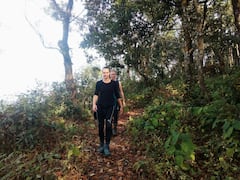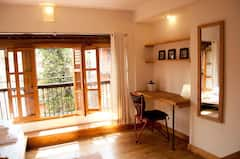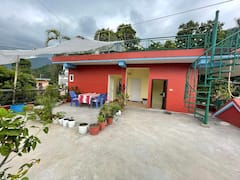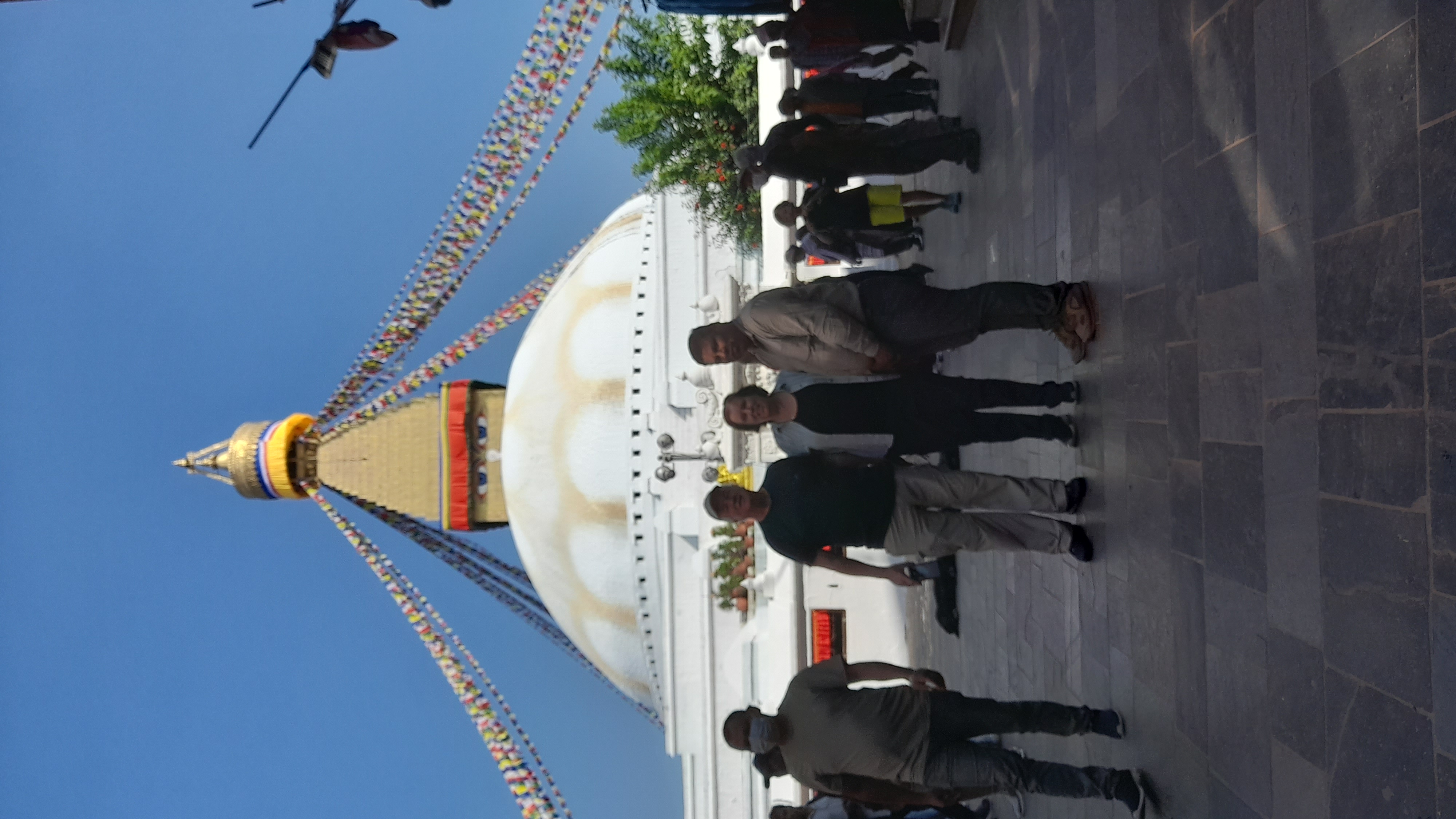Most tourists usually flock to Northern Nepal where Kathmandu (The City of Temples) or Bhaktapur (The City of Culture), are. However, unbeknownst to many, there are also plenty of things to see in Southern Nepal, especially if you want to escape the frenzy of tourists or if you want to see something a bit more natural and rustic. So much of Southern Nepal is still untamed forest. Certainly, this makes it ideal for those who really want to go off the beaten path. Unlike Northern Nepal where the high Himalayas are, Southern Nepal is mostly flatland, which makes it ideal for swaps, grasslands and savannas. A good part of it has also been converted into agricultural land. Southern Nepal is also called Terai, which means the low-lying lands at the foot of the Himalayas. Some people also refer to it as Tarai. So much of Terai was once a part of India rather than Nepal, before it was given as a gift by the British to what was once a united Kingdom of Nepal. Certainly, the culture of India remains strong here, especially since a lot of those from India have already chosen to reside here.
So if you want to venture off the known areas of Nepal, here are four places in Terai or Southern Nepal that might strike your fancy:
1. The heart of Nepal's jungle, Chitwan National Park

Chitwan means “The Heart of the Jungle.” and it’s one of the most popular sites in all of Nepal. It is listed as a UNESCO World Heritage site, all 932 square kilometers (230,302 acres) of it, which covers the forests, marshland and grassland of Southern Nepal. But if you think it’s all about roughing it, think again. Because Chitwan receives visitors from all walks of life including children and seniors, there are now plenty of eco-resorts and lodges in close proximity to the park as well. In this group of resorts, you’ll find that you’ve escaped the rest of the tourist pack you left behind in Kathmandu, so there’s enough time for you to relax while you wait for the proper hours to spot some nocturnal wildlife. What makes the park so special is a good sampling of these rare animals including the one-horned rhino, a species that has gained international popularity primarily because of the World Wildlife Fund’s efforts. They also have monkeys, deer, and birds all over. Lastly, if you’re extremely lucky, you can also spot a royal Bengal tiger.
Chitwan National Park
Address: Subarnapur 44200, Nepal
Website: Chitwan National Park
2. The hidden respite in Bardia National Park

Bardia is Nepal’s largest national park, 36 square kilometers (8,895 acres) bigger than Chitwan. It also happens to be the most uninhibited. For those of you who want to further escape the crowds though, you’ll find that Bardia, no matter what time of the year you visit, is never overrun with tourists. This is an advantage when you want to spot animals like the Bengal tiger. It’s also home to wild elephants, wild deer, and gangetic dolphins. For sightings like this, you’ll have to stay a minimum of 5 days. Bardia is also home to an indigenous ethnic tribe in Nepal called Tharu. The Tharus have their own language, customs, and traditions, some of which are still grounded in animism. The Tharus live in mud villages in this area. They plant corn, lentils, and rice for sustenance. They also rely on what the jungle gives them for protein such as deer, rabbit and wild boar.
Bardia National Park
Address: Bardia, Bheri 21800, Nepal
Website: Bardia National Park
3. The birthplace of Buddha, Lumbini

In Buddhism, there are four places in the world that Buddha holds most sacred. One of them is Lumbini where he was born. It is unsurprising then that Lumbini was named a UNESCO World Heritage Site. The crowning glory is the Maya Devi Temple, where the Queen Maya Devi gave birth to Buddha. The gardens are huge. It is a 4-kilometer (2.4-mile) spread that contains ancient stupas and the pillar of Ashoka, which the Indian emperor and Buddha follower erected there. The inscription gives Lumbini a tax-free status in commemoration of Buddhism’s founder. You’ll also find maroon-robed monks meditating under a bodhi tree, just as Buddha did centuries ago to reach enlightenment. It also has several monasteries which have been built by Buddhist followers all over the world. On the grounds, you’ll find the Lumbini Museum, which holds the manuscripts and other ancient artifacts discovered or excavated from the area. You can also roam through the Japan Peace Stupa.
Lumbini
Address: Rupandehi District, Nepal
Website: Lumbini
You might be interested in these Airbnbs!
4. Where Rama met Sita, Janakpur

Janakpur is one of the most important cultural and religious sites in Nepal because it so happens to be the birthplace of Sita, thus making it one of the most important places of Hinduism all over the world. The Janaki Mandir, its most important building, was where the king of Janakpur found an infant Sita on his doorstep. He then raised her as his own daughter. The whole palace is an ostentatious display of curves and details that make it look like it’s carved out of a children’s storybook. According to the epic, Ramayana, Janakpur is also where Lord Rama and Sita got married. Buddha, at one point in his life, also lived in Janakpur. Other than its religious significance, Janakpur is also a site for the locomotive enthusiast, as it’s the only spot in Nepal that has a railway and railhead.
Janakpur
Address: Dhanusa District, Nepal
Website: Janakpur
Nepal Tour Guide
Ananta Kafle
Hello there! My name is Ananta. I am a tourist guide. I have completed my master degree in Tourism Administration from Bangalore University since 2011 AD. I am a citizen of Nepal. I look after tours of UNESCO world heritage sites of Nepal. I can travel frequently to the tourist destinations of Nepal. One day trip to round trip tours are assisted by me to the travelers who would like to visit Kathmandu, Pokhara, Chitwan, Lumbini, Janakpur, Mustang district and many other places. Hindu temples and Buddhist stupas are main pilgrimage sites and medieval centuries kings courts are main historical sites in Nepal. Pokhara is famous for scenic beauty where we can find lakes including Fewa lake, Begnas lake etc. Chitwan has a national park where one horned rhinoceros, tigers and other wild life animals are found to see. Lumbini is the birth place of Gautam Buddha, he is the founder of Buddhism faith. Mount Everest is also a scenic attraction of Nepal. When you find these places on your interest to visit as tourist attraction, you may find me your the best travel provider. When there arises further assistance please free to contact me. Thank you.
Tours by Ananta
Nepal Tour Guide
Dinesh Thapa Magar
Meet Dinesh, your go-to guide for an unforgettable Nepal experience. With years of expertise, he seamlessly blends city charm with mountain thrill. Let Dinesh unveil Nepal's secrets, from vibrant streets to towering peaks, creating memories that linger far beyond the journey.
Nepal Tour Guide

Biren Choudhary
Nepal Tour Guide

Gyanendra Karki
Tours by Gyanendra
Nepal Tour Guide
Krishna Gautam
Namaskar (Hello)!Greetings from the land of discovery and adventure! I'm Krishna Gautam, a dedicated tour guide and travel planner for Nepal's breathtaking natural beauty and rich heritage of culture. I come with a Profound educational background and bring an original perspective to the journey. I received a master's degree in Rural Development and am currently pursuing an MPhil in Buddhist Studies and Yog Science at Tribhuvan University. In addition to my guiding experience, my university studies enable me to provide insightful commentary on Nepal's natural beauty and spiritual heart. With 29 years of expertise as a guide, I have been all throughout Nepal and have seen a variety of landscapes, from thrilling treks up to the basecamps of towering mountains to cultural journeys. I tailor every experience to fit your interests and schedule, whether it's taking in the colorful panorama of UNESCO World Heritage sites, going on challenging day treks, or taking all-inclusive round excursions to the most popular tourist attractions in Nepal, With so many attractions, Nepal has something to offer every kind of traveler. I promise that every second of your adventure will be full of excitement and discovery, from the busy streets of Kathmandu to the peaceful lakeside of Pokhara, from the greenery of Chitwan to the treasured birthplace of Lord Buddha in Lumbini.Some of the well-known locations I specialize in are cultural tours of Kathmandu's UNESCO World Heritage Site, as well as hidden gems that are just waiting to be discovered in Annapurna, Langtang, Manaslu, Upper Mustang, Dolpo, Ganesh Himal, Panchpokhari, Rolwaling, Solukhumbhu (the region surrounding Mount Everest), Makalu, and Kanchenjunga. My first priority are your comfort and happiness, and I take great pride in creating customized itineraries that meet your goals and interests. Whether you are looking for peaceful moments of reflection in the middle of nature, I can create a unique experience just for you.Allow me to serve as your guide as you set off on a wonderful adventure to discover the wonders and mysteries of Nepal's breathtaking landscape and deep cultural legacy. Let us together make some memories.I'm excited to plan your journey on this amazing journey just for you!Thank you!
A life of its own
Because Terai is so rich in natural resources, it also follows that there have been disputes on who actually owns this part of Nepal. The long historic dispute with India still rears its head once in a while. Indian politicians will insist that Terai is actually part of India. More than this though, Terai or Southern Nepal has also had its share of environmental problems. The almost-extinct, one-horned rhino is always being hunted even up to this day. Nevertheless, Terai also has this rustic, untouched beauty (it was even untouched by the 2015 earthquake) that becomes a great juxtaposition to the cold, sometimes harsh, climate of the Himalayas. Its flatness makes an endearing foreground to the striking Mahabharat range and the mountain villages that come with it. It pulsates with a life of its own, not quite Indian, but not quite Nepalese either.
History
Get Trip101 in your inbox
Unsubscribe in one click. See our Privacy Policy for more information on how we use your data























Create an account to